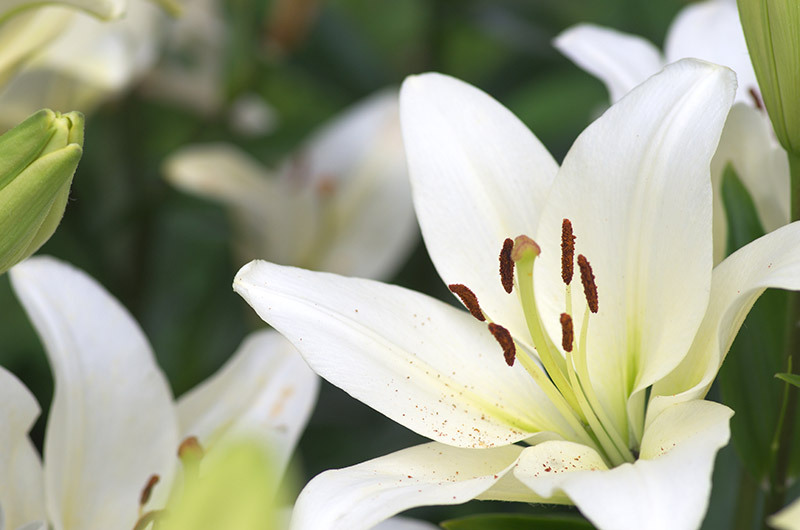Savvy Techniques for Sustaining Poinsettia Longevity
Posted on 26/08/2025
Savvy Techniques for Sustaining Poinsettia Longevity
Poinsettias, with their radiant red, pink, or white bracts, are quintessential holiday plants cherished for their festive charm. However, for many plant enthusiasts and casual decorators alike, keeping a poinsettia thriving long past the holiday season can be a challenge. Discover comprehensive, Google-friendly, and in-depth techniques to significantly extend the life and beauty of your prized poinsettia. Whether you're a beginner or horticultural enthusiast, these savvy tips for sustaining poinsettia longevity will ensure lush foliage and vibrant color well beyond winter.

Understanding Poinsettia Basics
Before embracing advanced care strategies, it's essential to grasp the nature and fundamental needs of poinsettia plants (Euphorbia pulcherrima). Native to Mexico and Central America, poinsettias are actually shrubs or small trees, and their famous "flowers" are colored bracts--modified leaves--which surround small, yellow actual flowers called cyathia. Knowing this, you can tailor your poinsettia longevity techniques to mimic their natural habitat and growth cycle.
- Temperature: Warm, stable temperatures ideal for tropics.
- Light: Bright, indirect sunlight.
- Water: Well-draining soil and regular, careful watering.
- Humidity: Moderate to high humidity levels.
Choosing the Right Poinsettia for Long-Lasting Beauty
Quality begins with selection. Healthy plants provide a better foundation for poinsettia longevity. When shopping, seek out:
- Plush, deep green foliage from the bottom up
- Bracts (colored leaves) that are vivid and undamaged
- No signs of wilting, yellowing, or pest infestation
- Centrally clustered, yellow-green cyathia with minimal pollen drop
Pro tip: Avoid plants that have been displayed near doors, drafts, or in fluctuating temperatures.
Creating the Ideal Indoor Environment for Poinsettias
The secret to keeping poinsettias healthy is replicating conditions similar to their native habitat:
Proper Placement Matters
- Light: Place your poinsettia near a sunny, south- or east-facing window, but keep away from direct midday rays to avoid scorching the bracts.
- Temperature: Maintain room temperatures between 65?F and 75?F (18?C to 24?C) during the day, with a slight drop at night. Avoid spots near heaters, fireplaces, or cold drafts.
- Humidity: If your home is dry, especially in winter, increase humidity by placing a tray of water near the plant or using a humidifier. Grouping plants can also help to boost surrounding moisture levels.
Watering: Striking the Right Balance
Overwatering is the chief culprit behind early demise of poinsettias. Follow these smart steps:
- Check soil frequently: Water only when the top 1 inch (2.5 cm) of soil feels dry to the touch.
- Drainage: Always remove decorative foil or ensure the drainage holes are free. Never let the pot stand in water.
- Water method: Water thoroughly until water comes out the bottom, then discard excess water.
- Temperature: Use room-temperature water for best absorption.
Tip: If your home is especially dry or you heat with forced air, check soil moisture even more frequently.
Feeding Your Poinsettia for Extended Longevity
Poinsettias are not heavy feeders, but after their initial bloom period, they benefit from a balanced approach:
- Do not fertilize while your poinsettia is in full bloom.
- After bracts begin to fade (typically late winter or early spring), feed every 2-4 weeks with a balanced, water-soluble fertilizer (such as 10-10-10 or 20-20-20 at half strength).
- Cease fertilizing as fall approaches and bracts begin to color again in preparation for the next blooming cycle.
Advanced Care Techniques for Sustaining Poinsettia Longevity
Post-Holiday Maintenance
Once the holidays have passed and you're left with a lovely houseplant, extend poinsettia life with strategic care:
- Keep in bright light: The plant will remain attractive for several months; continue optimal light and watering routines.
- Pruning: In late March or early April, cut the plant back to about 6 inches to encourage bushy regrowth.
Poinsettia Year-Round Care Timeline
To truly maximize the life span of your poinsettia, follow this annual care schedule:
- January - March: Maintain regular watering and light. Prune after bracts fade.
- April - May: Repot if needed. Begin feeding every 2-4 weeks.
- June - August: Move poinsettia outdoors to a partially shaded spot once nighttime temperatures are consistently above 55?F (13?C). Continue even watering and fertilizing.
- September: Move back indoors when temperatures drop below 60?F (16?C). Cut back and repot if necessary.
- October - November: To re-bloom: Provide 14-16 hours of complete darkness nightly (cover with a box or place in a dark closet), with bright light during the day, for about 8-10 weeks.
- December: Once color returns to bracts, resume normal care and enjoy your beautiful poinsettia through the holidays and beyond!
Preventing Common Poinsettia Problems
Yellowing Leaves
This is usually due to overwatering, exposure to drafts, or insufficient light. Adjust watering, move away from drafts, and provide more light as needed.
Leaf Drop
Sudden temperature changes and cold exposure are the main culprits. Maintain steady room temperature and shield your plant from doors and frosty windows.
Pest Management
- Monitor regularly for whiteflies, aphids, and fungus gnats.
- Remove pests with gentle sprays of lukewarm water or treat infestations with insecticidal soap if necessary.
Keeping Poinsettias Safe for Pets and Children
Poinsettias are not as toxic as commonly believed, but their milky sap can cause mild skin irritation or digestive upset in pets and humans. Keep out of reach and wash hands after handling.
Boosting Poinsettia Longevity with Repotting
Over time, soil can become compacted or depleted of nutrients. Repotting ensures your poinsettia plant has room to grow and access to fresh soil. Here's how:
- Choose a slightly larger pot with drain holes.
- Use a mix of peat moss, perlite, and high-quality potting soil.
- Repot in spring, after pruning.
- Water after repotting and resume regular care when you see new growth.

Encouraging Poinsettia Rebloom for Next Season
The Dark Treatment
If you want your poinsettia to color up beautifully for the next holiday, you must induce 'short day' conditions:
- Beginning in late September or early October: Provide uninterrupted darkness for 14-16 hours every night for at least 8 weeks.
- During the day, keep the plant in bright, indirect light.
- Consistency is crucial; even brief light exposure at night can thwart the process.
- Once the bracts have fully colored, resume normal light exposure and care routines.
FAQs: Ensuring Ongoing Poinsettia Plant Vitality
- Q: Why do my poinsettia's leaves wilt suddenly?
A: This is often a sign of underwatering or exposure to cold drafts. Water your plant and check its placement for temperature extremes. - Q: Can I plant my poinsettia outside?
A: In USDA zones 9-11, you can plant them outdoors in a sheltered location. In cooler areas, keep them as indoor plants. - Q: Are poinsettias perennial?
A: Yes! With proper care, poinsettias can thrive and rebloom for many years.
Creative Ways to Use Poinsettias Beyond the Holidays
Poinsettias aren't just for Christmas. Extend their decorative value throughout the year:
- Spring centerpiece: Place in a basket with ferns and ivy.
- Summer patio plant: Let it join your container garden on shaded patios.
- Year-round houseplant: Display its lush green leaves in attractive pots once bracts have faded and enjoy tropical foliage all year.
Summary: Your Guide to Sustaining Poinsettia Longevity
Sustaining poinsettia longevity is achievable with mindful care, patience, and a bit of horticultural know-how. From proper light, water, and feeding routines to advanced year-round maintenance and creative repurposing, your poinsettia can thrive long beyond the holiday season. By following these savvy techniques for sustaining poinsettia health, you're investing in sustainable beauty and botanical success.
- Select healthy plants for long life.
- Provide the right temperature, humidity, and light.
- Water carefully and avoid overwatering.
- Fertilize after blooming and prune for shape.
- Prevent pests and maintain annual dark treatments for reblooming.
With these guidelines, your poinsettia can amaze guests not just at Christmas but all year long. For more houseplant care tips, bookmark this guide and revisit whenever your poinsettia needs a health boost!
Latest Posts
The intriguing meanings tied to birth month flowers
Savvy Techniques for Sustaining Poinsettia Longevity
Unleash the Beauty of Orchids with Care





